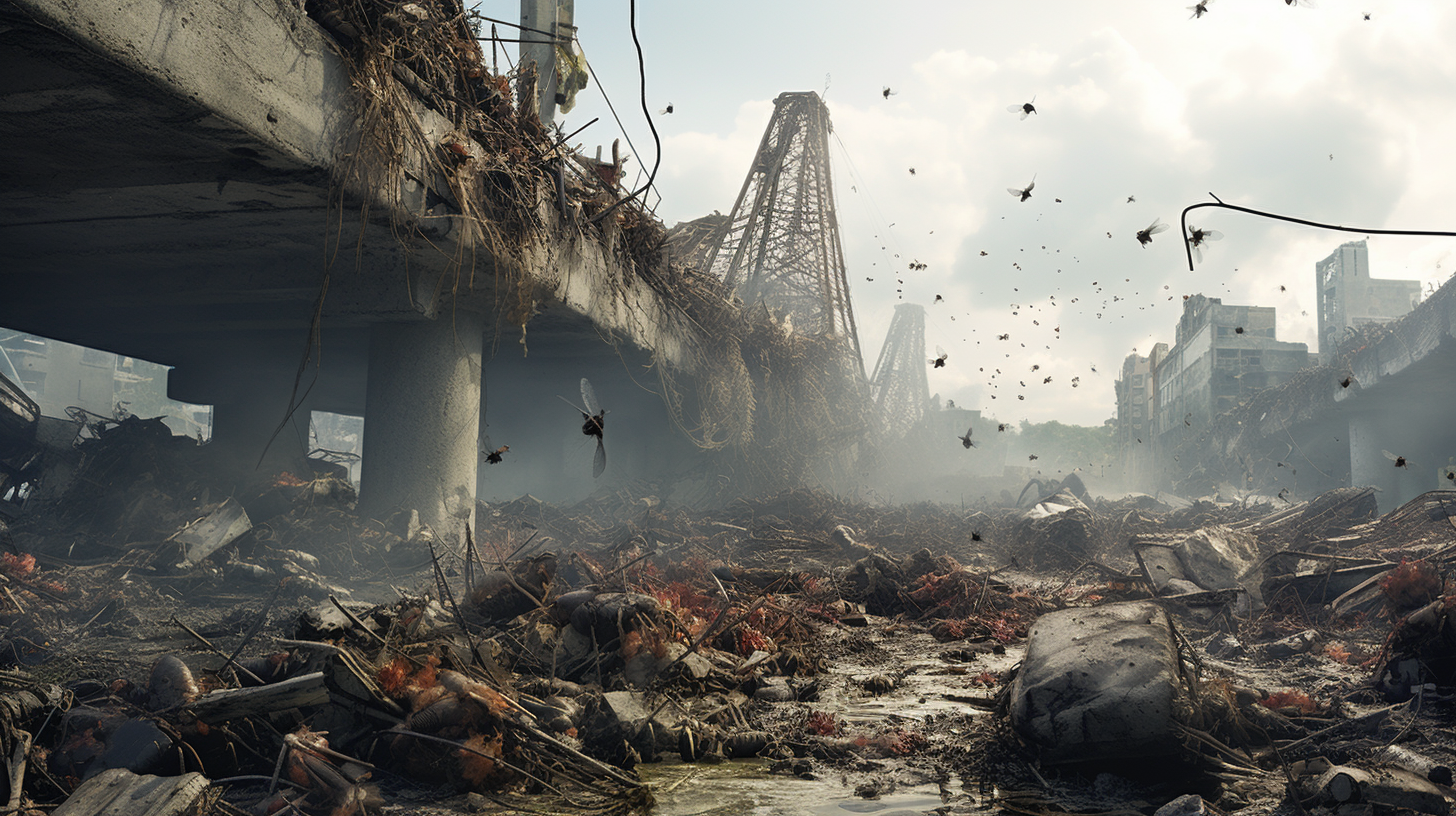Amid the ruins of a silent concrete jungle, a cacophony of clicks and whirs go largely unnoticed. A buzz of activity flourishes where human footsteps have long ceased to tread. The anarchitects of this post-collapse world are not human; they are insects. In the cracks and crevices, among the sprawling roots and waterlogged basements, a new order rises. ‘Architects of Anarchy – Insects as Builders in a Collapsed Ecosystem’ paints a veritable tableau of how these tiny creatures forge empires in the aftermath of environmental turmoil.
Witness the Carpenter Ants, once humble dwellers of the forest, now carving out urban strongholds in the spines of skyscrapers—structures unwittingly designed to human scale, yet perfect for the ant kingdom. Their colonies harbor symbiotic fungi, nourished by the detritus of a bygone era, transforming human waste into a fungal feast.
Not far from the ants, termites challenge the concept of chaos itself. They erect complex mounds fashioned from the very ground we once tread upon, not merely as shelter, but as a hub of climate resilience. These natural engineers intuitively grasp what we humans could not—the value of sustainable living. But their construction is not without consequence, as it upends the remnant patches of human architecture, repurposing concrete and steel to serve their inexhaustible monarchy.
Gone are the pollinator gardens, but in their stead, the Mutant Bees—a new breed born of the toxic kiss of our negligence—construct sprawling hives amidst the relics of our past. Coated in vibrant shades, a cruel mimicry of the flowers they’ll never know, they use the skeletons of buildings as framework for their hives. Their sting carries the echo of floral paradises lost, a somber reminder of the ways we failed our winged kin.
Add to this convolution, the Dragonflies—apex airborne predators of this silent dystopia. They weave through the iron forests with precision buoyed by wings evolved to beat heavy metals into submission. Their swarms form living sculptures, a dance macabre above the decay, a haunting beauty underlining nature’s adaptability in face of human absence.
The article not only magnifies the role of insects in a hypothetical future devoid of human intervention but leaves its readers to ponder on the resilience and adaptability of these ‘architects.’ Each paragraph, rich in descriptive synonyms and imagery, is a deliberate provocation—urging readers to reflect on the untapped potential of the insect world and, in a darker vein, the potential consequences of environmental apathy. Expert voices intersperse the narrative, providing scientific weight to the inevitable rise of insects in the empty niches of failed ecosystems.
Through vivid storytelling and harrowing speculation, this piece challenges us to consider our place in a world that no longer caters to our needs but thrives in our absence. It serves as a cautionary tale, woven through with strident entomological research, that demands urgent present-day reflection and action against the backdrop of an environmental endgame.
